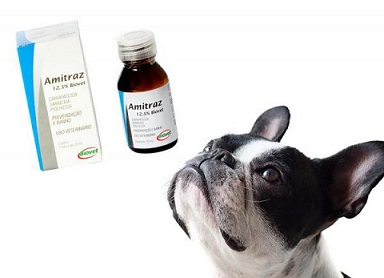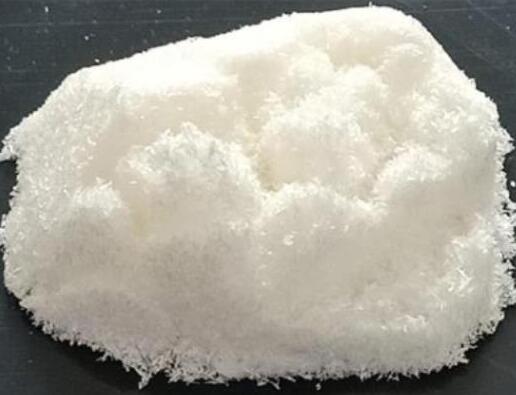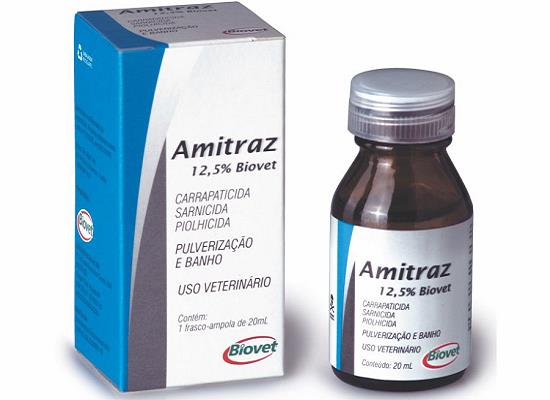What is Amitraz?
Amitraz is a contact broad-spectrum Formamidine insecticide, which is a moderately toxic acaricide. In 1971, Palmer reported its acaricidal activity, and Boots Co. Ltd. recommended it as acaricide in 1973. It has contact, antifeedant and repellent effects, but also has certain stomach poisoning, fumigation and systemic effects[1]. It is effective for various insect states of the Tetranychidae, but it is less effective for overwintering eggs[2].

It has a variety of poisoning mechanisms, mainly inhibiting the activity of monoamine oxidase and inducing excitatory effects on non-cholinergic synapses of the central nervous system of pest mites. Its insecticidal effect may be related to interfering with the function of the nervous system, increasing the excitability of the worm body, and some parts of the mouth organs being imbalanced, resulting in that the mouth organs cannot be completely pulled out of the animal skin or dropped out[3]. At the same time, it can also affect the spawning function of insects and the developmental ability of eggs. Mites that are resistant to other acaricides also have high killing power[4]. The effective period can reach 40-50 days.
It is mainly used in fruit trees, vegetables, tea, cotton, soybeans, sugar beets and other crops to prevent and control various mites. It also has good control effects against psyllids, and it is effective against some lepidopteran pest eggs[5], and against aphids and cotton bollworms, red Bollworm and others also have a certain effect. It can be mixed with pesticides such as organophosphorus and pyrethroids, avermectin[6], etc. It has synergistic effect and can expand the insecticidal spectrum.
It is used to control ectoparasite diseases of cattle, sheep, pigs, and rabbits, such as chigger mites, pruritus mites, bee mites, ticks, and lice. It has a broad spectrum of acaricides and has a variety of poisoning mechanisms. It is also effective for controlling mites that are resistant to other acaricides. It is safe to humans and livestock, and relatively harmless to bees[7].
References
[1] C Hugnet, F Buronrosse, X Pineau. Toxicity and kinetics of amitraz in dog[J]. American Journal of Veterinary Research, 1996, 57(10):1506-1510.
[2] S Ducornez, N Barré, R J Miller. Diagnosis of amitraz resistance in Boophilus microplus in New Caledonia with the modified Larval Packet Test[J]. Veterinary Parasitology, 2005, 130(3-4):285-292.
[3] N N Jonsson, M Hope. Progress in the epidemiology and diagnosis of amitraz resistance in the cattle tick Boophilus microplus[J]. Veterinary Parasitology, 2007, 146(3-4):193-198.
[4] Andrew Y Li, Ronald B Davey, Robert J Miller. Detection and Characterization of Amitraz Resistance in the Southern Cattle Tick, Boophilus microplus (Acari: Ixodidae)[J]. Journal of Medical Entomology, 2004, 41(2):193-200.
[5] Robert J Miller, Ronald B Davey, W Hunter White. A Comparison of Three Bioassay Techniques to Determine Amitraz Susceptibility in Boophilus microplus (Acari: Ixodidae)[J]. Journal of Medical Entomology, 2007, 44(2):283-294.
[6] https://pubchem.ncbi.nlm.nih.gov/compound/36324
[7] https://pubs.acs.org/doi/10.1021/jf970049x
You may like
Related articles And Qustion
Lastest Price from Amitraz manufacturers

US $6.50/box2025-09-28
- CAS:
- 33089-61-1
- Min. Order:
- 1box
- Purity:
- 96%
- Supply Ability:
- 20TONS

US $0.00-0.00/KG2025-07-30
- CAS:
- 33089-61-1
- Min. Order:
- 1KG
- Purity:
- 98%TC
- Supply Ability:
- 20TONS




